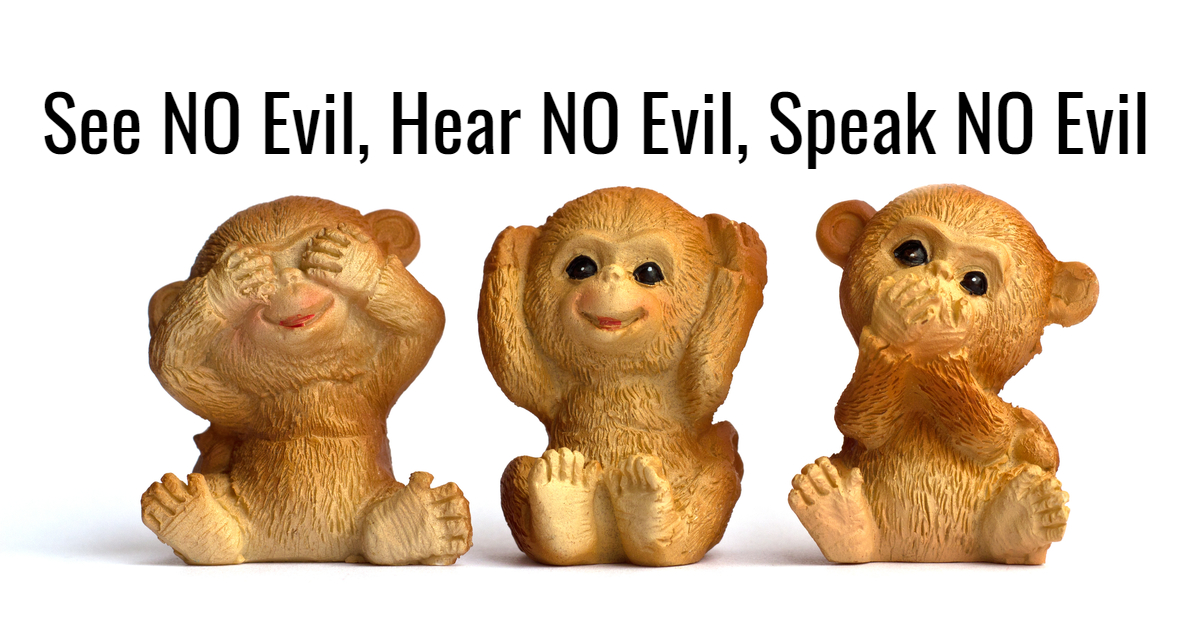
How to Use Body Language to Spot a Liar? Glomacs Training & Consultancy
The phrase "see no evil, hear no evil, speak no evil" is often depicted in pop culture, usually signifying a moral stance against negativity or wrongdoing. Let's explore some instances: "See No Evil, Hear No Evil" is a 1989 comedy film directed by Arthur Hiller.

Hear no evil see no evil speak no evil monkeys Animal Illustrations Creative Market
You've probably heard of the proverb "see no evil." But few know the origin of this principle, or why it's also associated with monkeys? Although the English phrase itself is relatively.
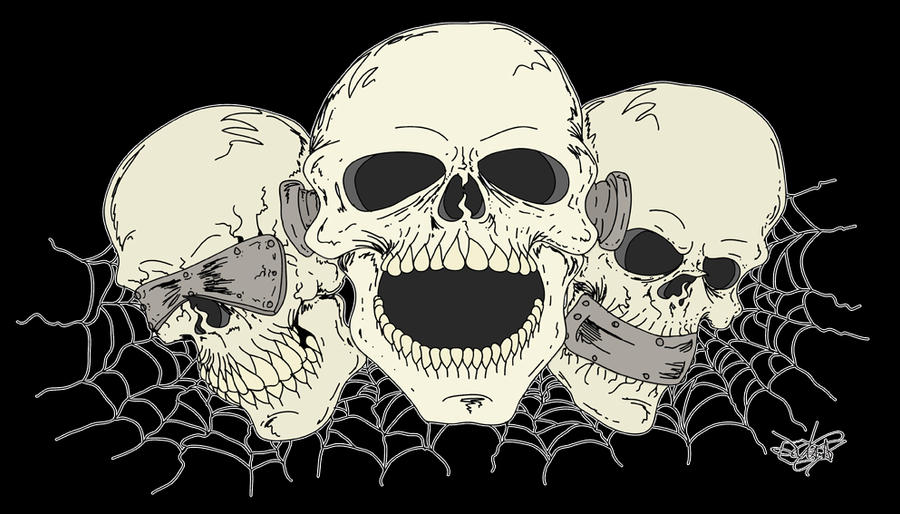
See No Evil, Hear No Evil, Speak No Evil by ZMBGraphics on DeviantArt
See No Evil, Hear No Evil 1989 Dave is deaf, and Wally is blind. They witness a murder, but it was Dave who was looking at her, and Wally who was listening.D.
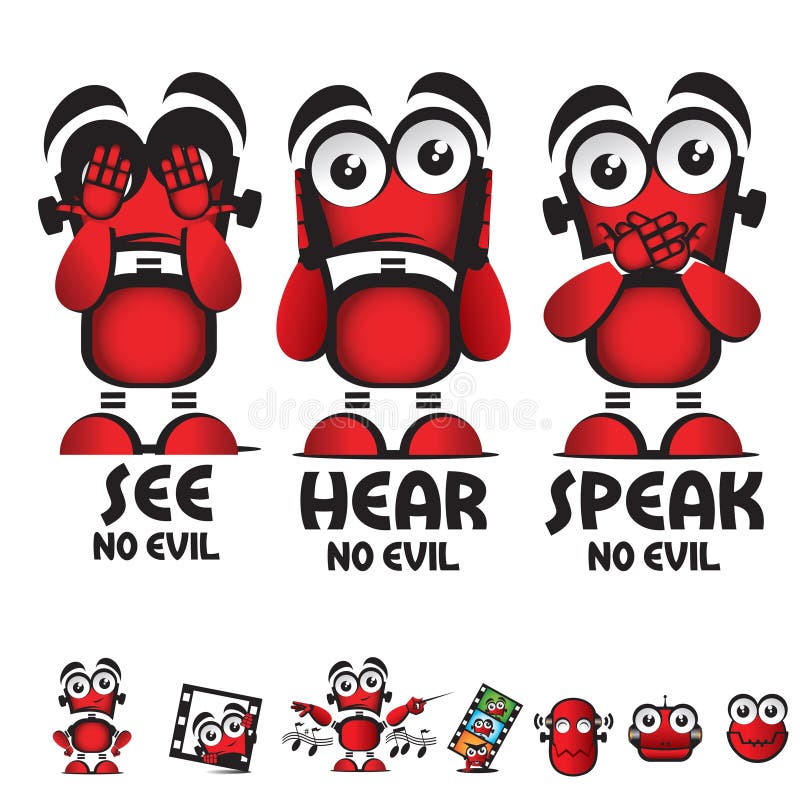
See No Evil, Hear No Evil, Speak No Evil. Robot Vector Stock Vector Illustration of vector
99+ Photos Comedy Crime Dave is deaf, and Wally is blind. They witness a murder, but it was Dave who was looking at her, and Wally who was listening. Director Arthur Hiller Writers Earl Barret Arne Sultan Marvin Worth Stars Richard Pryor Gene Wilder Joan Severance See production info at IMDbPro RENT/BUY from $3.59 search Amazon
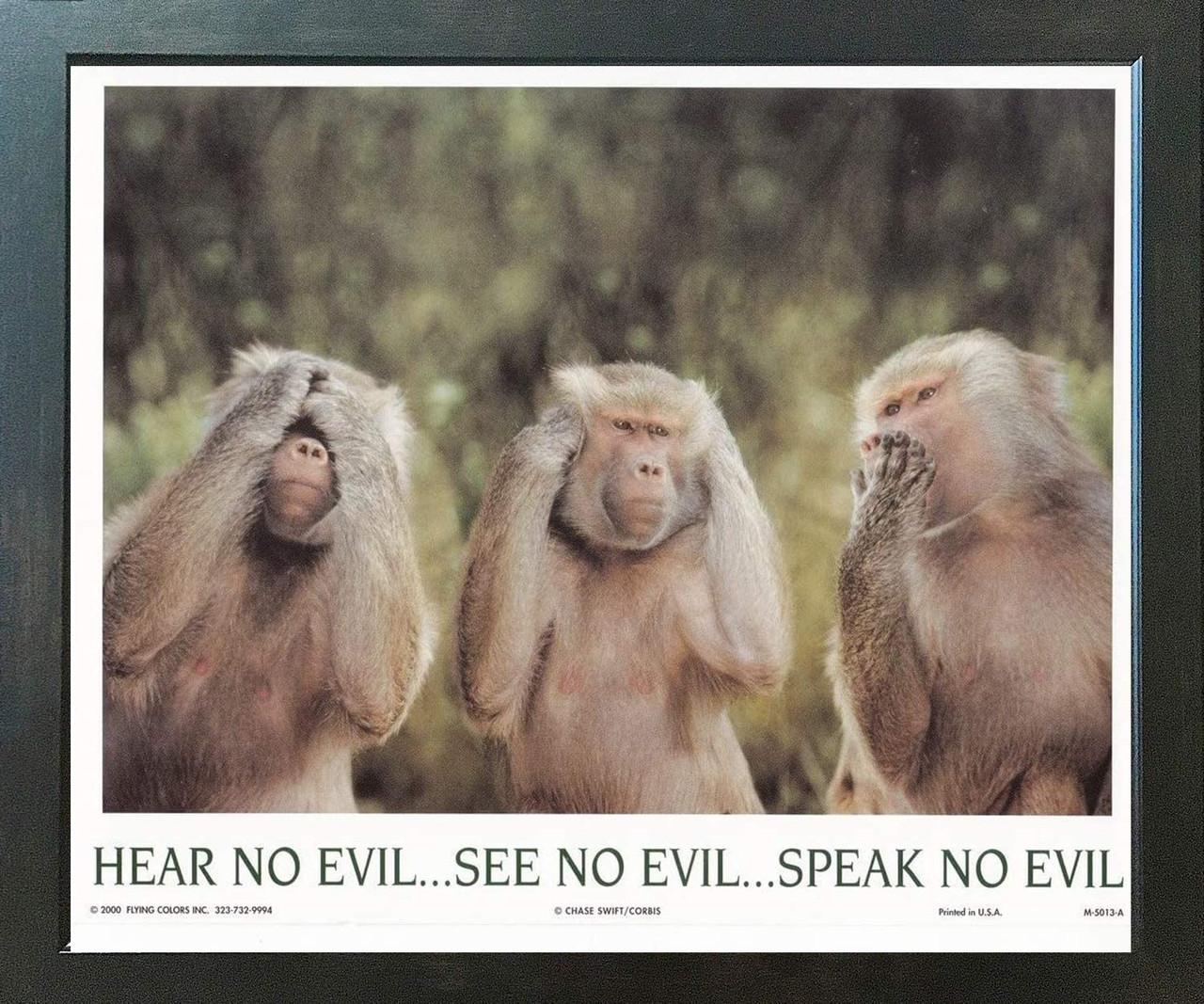
Monkeys Hear No Evil See No Evil Speak No Evil Espresso Framed Art Print Poster (18x24) Impact
In the West, the proverb see no evil, hear no evil, speak no evil means to turn a blind eye to something that is legally or morally wrong. In this case, a person who will see no evil, hear no evil, and speak no evil pretends that he has not witnessed wrongdoing, and therefore abdicates all responsibility in righting a wrong.
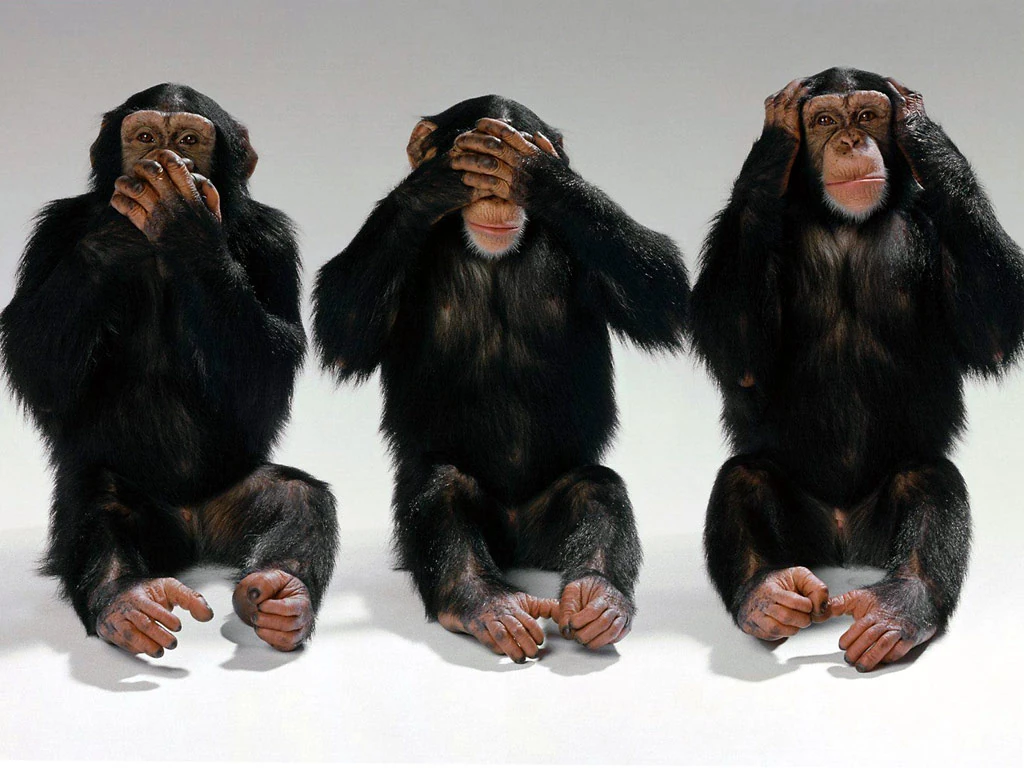
Image HearNoEvilSeeNoEvilSpeakNoEvil.jpg Metal Gear Wiki Fandom powered by Wikia
July 12, 2023 Table of Contents You've probably seen them - the three wise monkeys representing the proverb see no evil, hear no evil, speak no evil. But while the symbolism appears clear enough, what do the three monkeys have to do with evil?
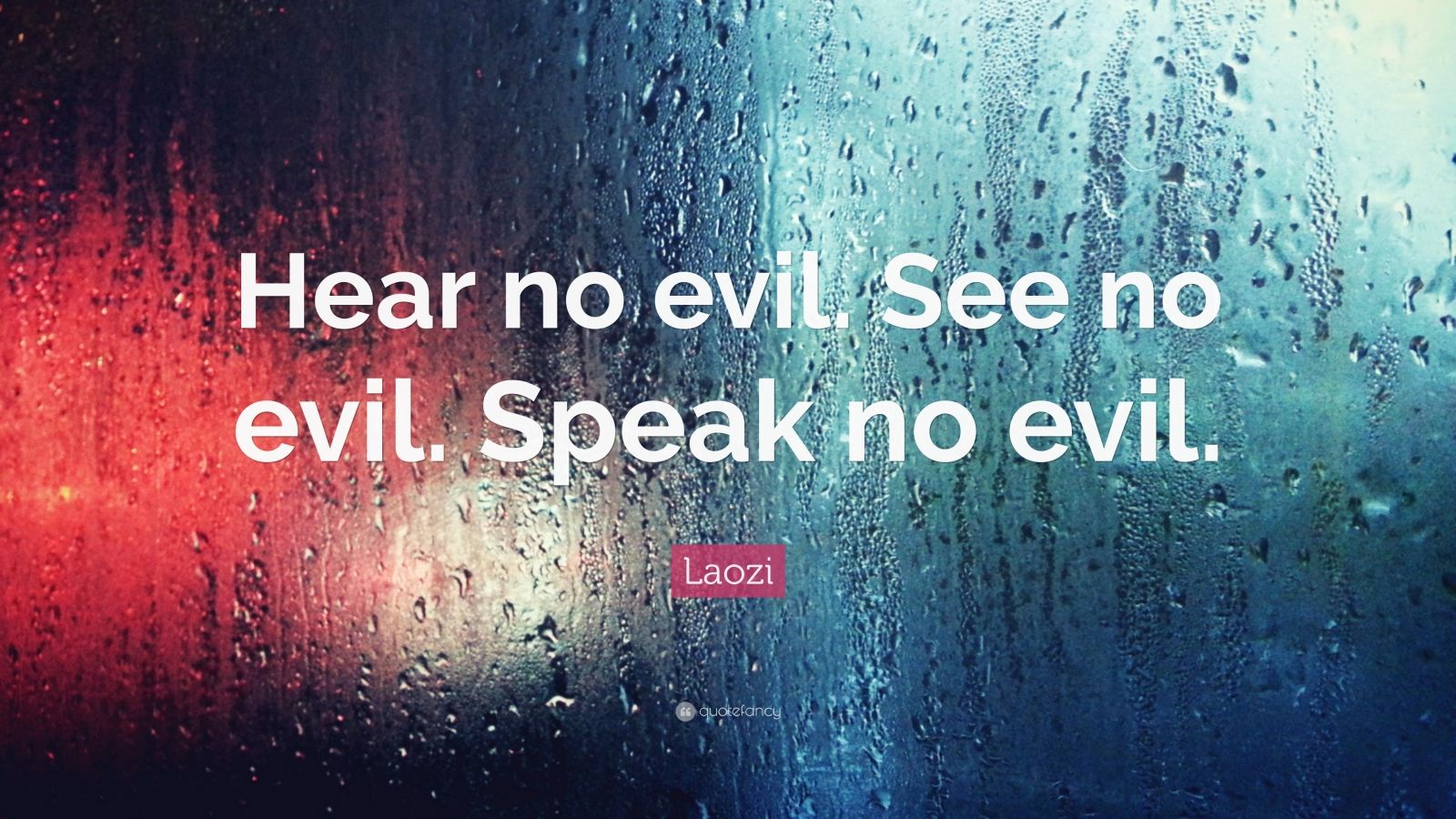
Laozi Quote “Hear no evil. See no evil. Speak no evil.” (9 wallpapers) Quotefancy
The protagonists are Kikazaru, the monkey that doesn't hear, Iwazaru, the monkey that doesn't speak and Mizaru, the monkey that doesn't see. These three unique creatures were sent by the gods as observers and messengers. In other words, they were to testify to the good and evil of humanity and report back to the deities.

Speak No Evil Hear No Evil See No Evil McPherson Ave Church Of Christ
In particular, "see no evil", "hear no evil", and "do not speak of evil". Monkeys Mi-zaru, Cica-zaru and Yves-zaru "hide" from evil, closing the mouth, eyes and ears. And we often meet their images in sculptures and figurines, as well as copied and parodied ones. However, they also have a fourth friend, whose image we meet much rarer.
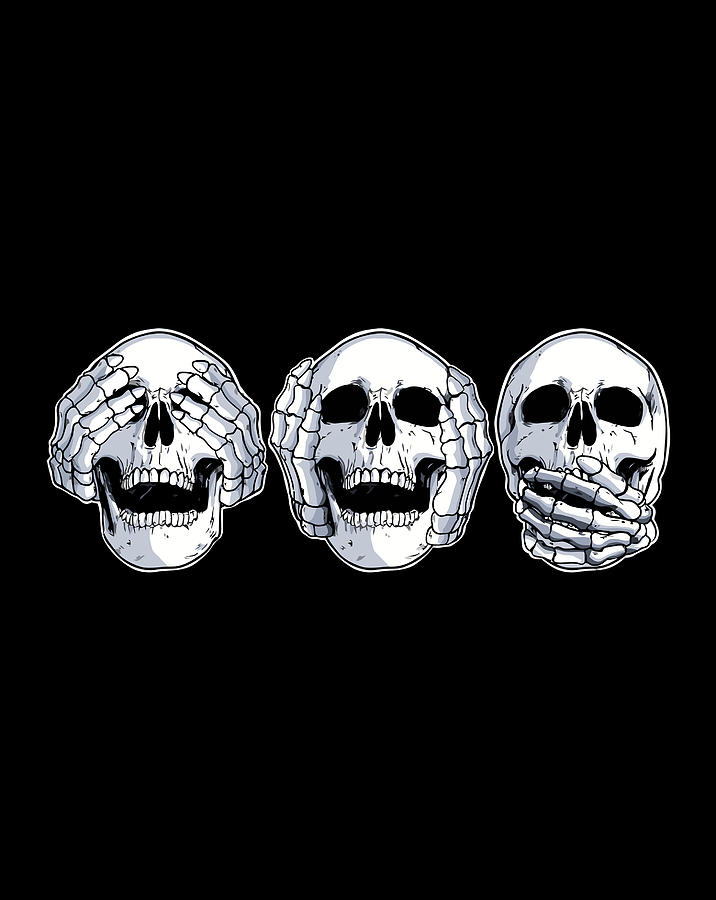
Speak No Evil Hear No Evil See No Evil Skull Digital Art by Jane Arthur
Definition of See No Evil in the Idioms Dictionary. See No Evil phrase. What does See No Evil expression mean? Definitions by the largest Idiom Dictionary.. See no evil, hear no evil, speak no evil. 2. proverb To ignore or turn a blind eye to evil without taking action against it.

Speak no see no hear no evil 44 x 24 original Etsy Evil, Painting, Acrylic painting
The ancient Japanese proverb "see no evil, hear no evil, speak no evil" was popularized in the 17th century as a pictorial Shinto maxim, carved in the famous Tōshō-gū Shinto shrine in Nikkō, Japan. Three Wise Monkeys illustrated the idea of protecting one's self from unsavory or challenging behavior, thought, or language.
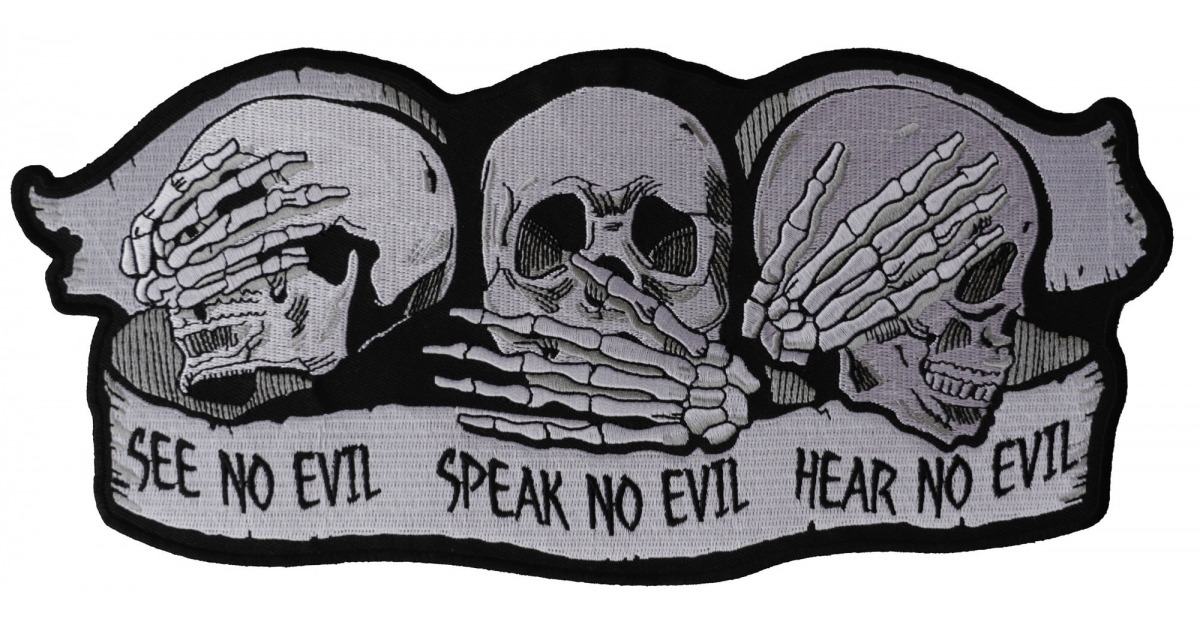
Hear No Evil, See No Evil, Speak No Evil Logo Design Contest LogoTournament
The three wise monkeys are a Japanese pictorial maxim, embodying the proverbial principle " see no evil, hear no evil, speak no evil ". [1] The three monkeys are Mizaru ( 見ざる ), who sees no evil, covering his eyes Kikazaru ( 聞かざる ), who hears no evil, covering his ears Iwazaru ( 言わざる ), who speaks no evil, covering his mouth. [2]
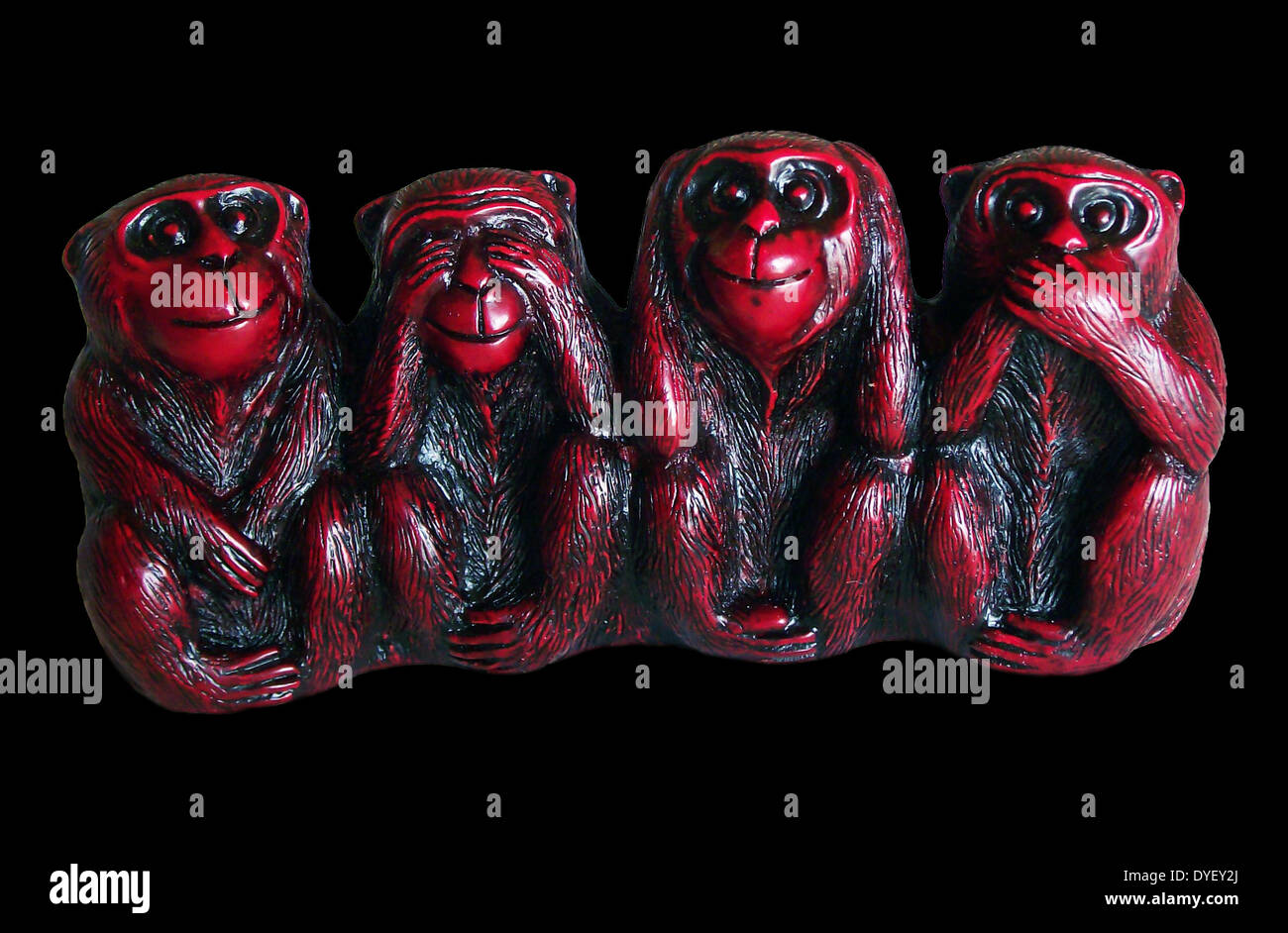
The Four Wise Monkeys Do no evil; See no evil; Hear no evil; Speak Stock Photo 68555386 Alamy
The three wise monkeys are a pictorial maxim, embodying the proverbial principle "see no evil, hear no evil, speak no evil". The three monkeys are Mizaru, covering his eyes, who sees no evil; Kikazaru, covering his ears, who hears no evil; and Iwazaru, covering his mouth, who speaks no evil. Lafcadio Hearn refers to them as the three mystic apes in his Glimpses of unfamiliar Japan (volume 2.

Hear Speak See No evil Skull Sticker Window Decals Tailgate Graphic Window Decal
Meaning: Ignore bad behavior by pretending not to see it. Background: In English, this expression is generally used in reference to those who choose to turn a blind eye to wrongdoings; but its original meaning, rooted in Confucianism, is to teach prudence and the importance of avoiding evil.
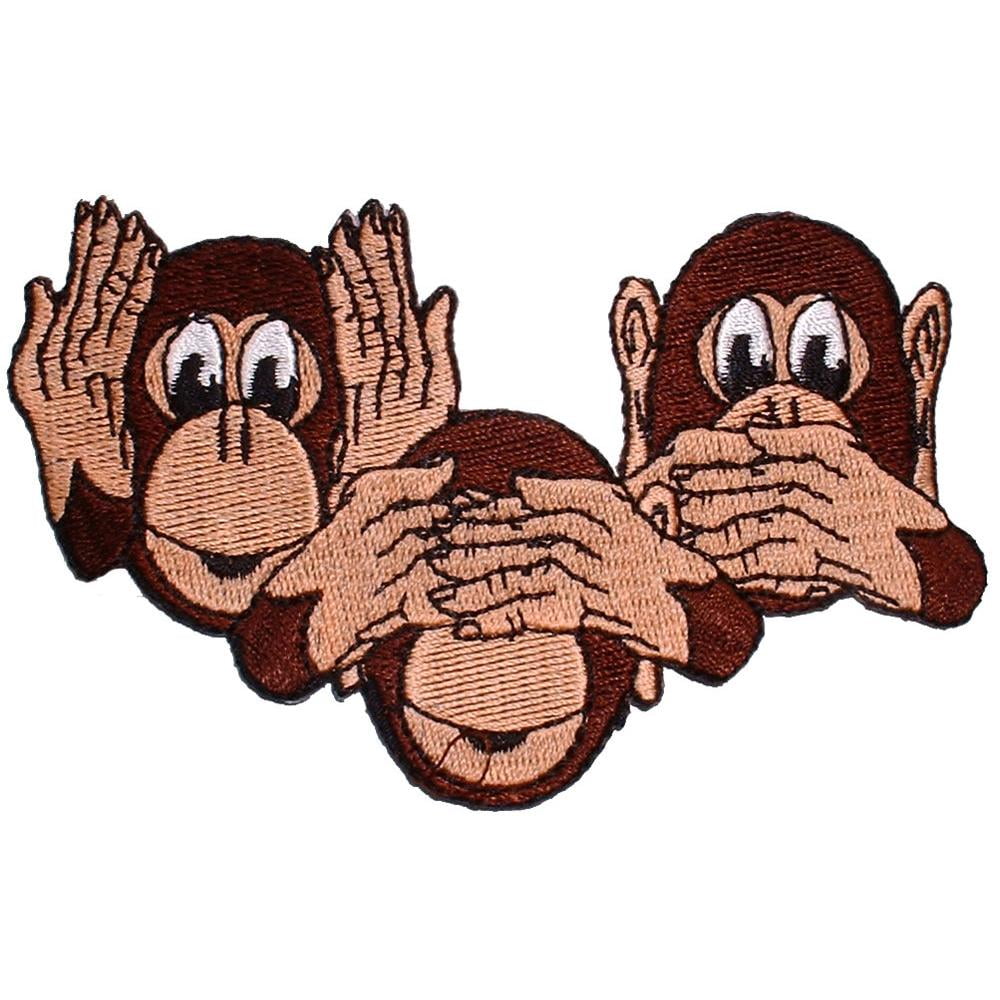
Speak See & Hear No Evil Monkeys Patch 3"
The Monkey Morality Pose is a visual comedy trope frequently seen in film, television and animation. It is based on the old idea of the Three Wise Monkeys, whose example good people should follow to live their lives: See No Evil, Hear No Evil, Speak No Evil with hands over eyes, ears, and mouth, respectively. A fourth monkey, Do No Evil, keeps.
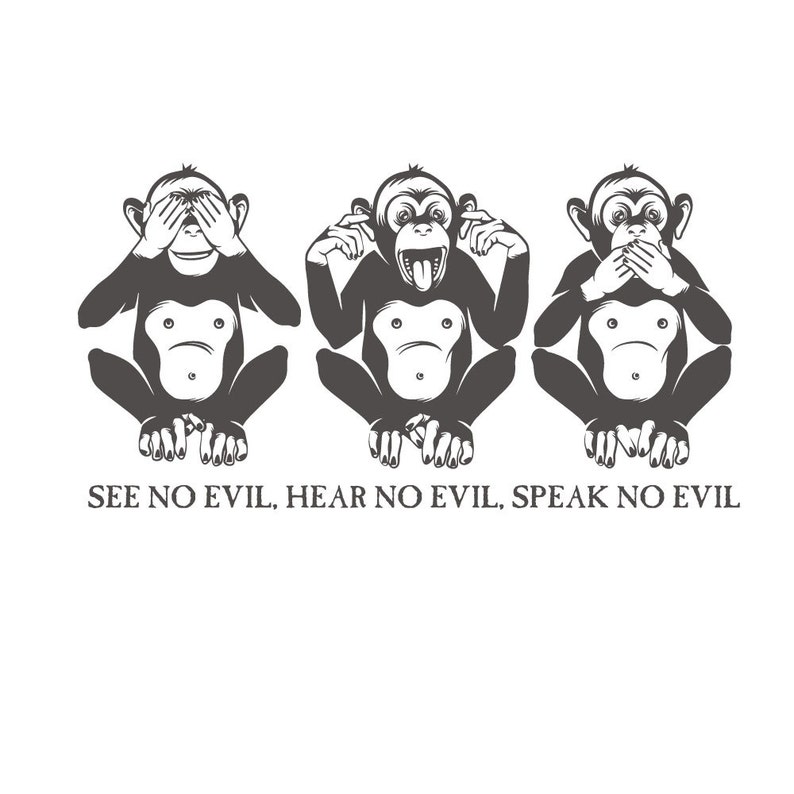
3 Monkeys Quote 'See No Evil Hear No Evil Speak No Etsy
Interjection [ edit] [see no evil, hear no evil, speak no evil] Indicates willingness to be in good mind, speech and action, and not dwell on evil thoughts. Indicates a conniving attitude; indicates willingness to turn a blind eye towards evil. 1968, Planet of the Apes (1968 film)
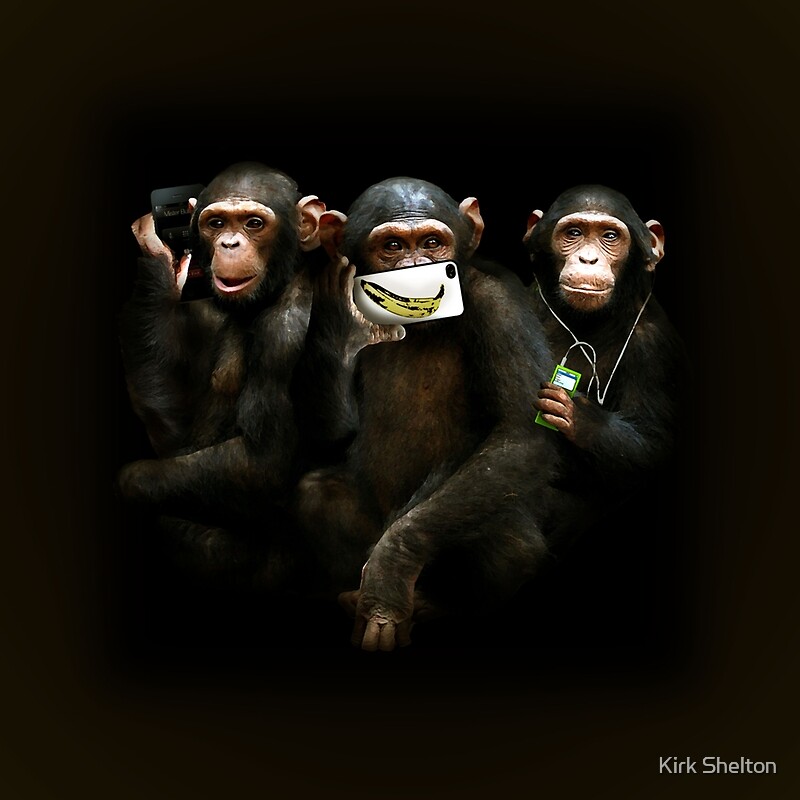
"Speak no Evil, See no Evil, Hear no Evil." by Kirk Shelton Redbubble
Gandhi's Three Monkeys is a series of sculptures created in 2008 by Indian artist Subodh Gupta that portrays three heads in different types of military headgear. The sculptures recall a visual metaphor from India's famous champion of peace, Mahatma Gandhi, of the "Three wise monkeys", representing the principle "see no evil, hear no evil, speak no evil".